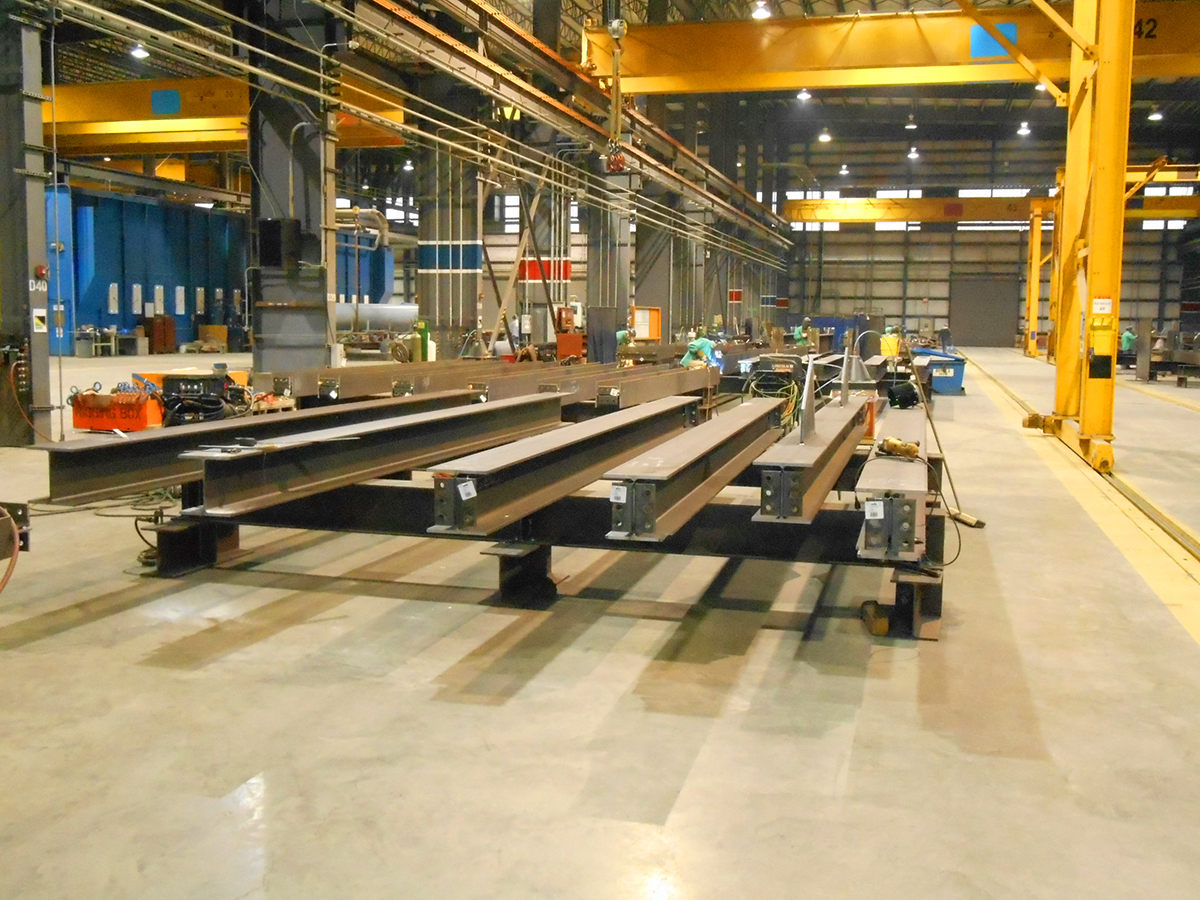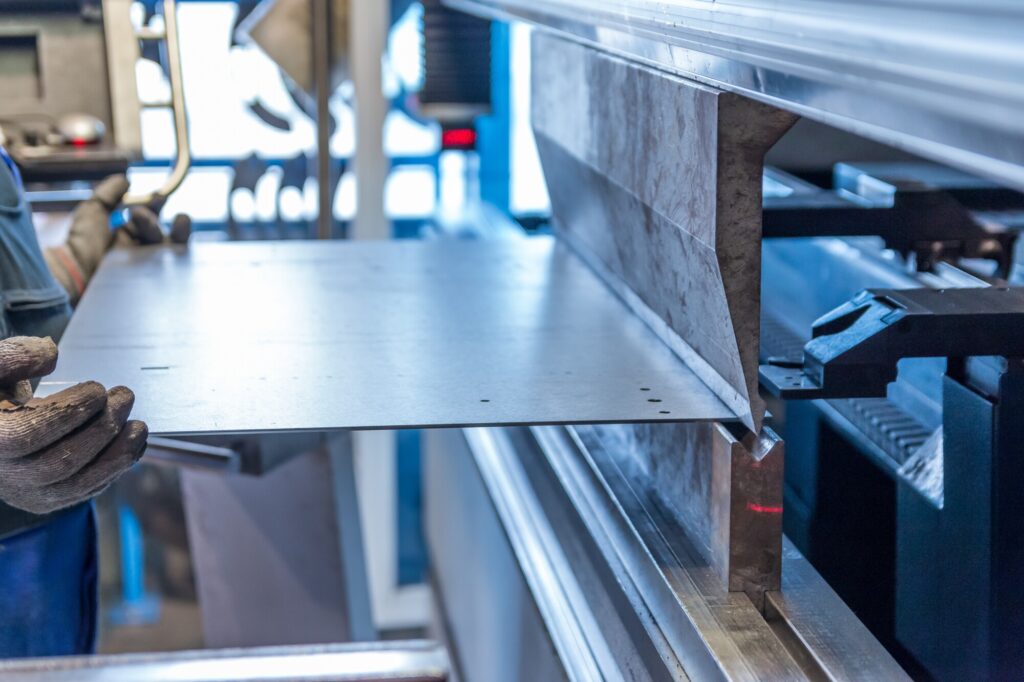Innovative Trends in Steel Construction: Enhancing Longevity and Precision
In the world of steel fabrication, the pursuit of toughness and precision has actually brought about a wave of innovative trends that are reshaping the industry. From advancements in welding modern technologies to the integration of robotic automation in construction processes, the landscape of steel manufacturing is progressing quickly. High-strength alloy advancement, combined with the application of 3D modeling and simulation software program, is pushing the boundaries of what is possible in terms of architectural honesty and accuracy. Furthermore, the expanding focus on sustainable methods in steel manufacturing is not only driving efficiency however also promoting an extra ecologically mindful approach to construction. These fads are not just shaping the here and now however likewise preparing for the future of steel fabrication, assuring more improvements in resilience and precision.
Advanced Welding Technologies
In the realm of steel manufacture, the adoption of cutting-edge welding innovations has actually significantly revolutionized the market's approach to attaining superior quality and accuracy in architectural welds. Advanced welding technologies, such as laser beam of light welding and friction stir welding, have actually emerged as game-changers in the area. By leveraging these innovative welding techniques, steel producers can raise the sturdiness, toughness, and precision of their structural welds, fulfilling the increasingly requiring needs of modern-day construction projects.
Robotic Automation in Manufacture
Welcoming robot automation has actually become a foundation of contemporary steel construction practices, improving procedures and enhancing performance throughout the industry. Robotics are changing the means steel components are manufactured, providing unrivaled precision and speed while minimizing human error. These automated systems can manage repeated tasks with consistent accuracy, bring about higher top quality final product.
One key benefit of robotic automation in steel fabrication is the ability to function all the time without tiredness, considerably raising manufacturing result. This continuous operation reduces downtime and accelerates project timelines, eventually conserving expenses for makers. In addition, robotics can be configured to do complex tasks that might be difficult or hazardous for human workers, boosting security in the workplace.
In addition, robotic automation enables seamless assimilation with various other electronic innovations, such as computer-aided style (CAD) software program and Internet of Things (IoT) systems (Alpha reo). This interconnected strategy boosts interaction in between various stages of fabrication, maximizing operations and guaranteeing real-time monitoring and control. As the steel manufacture industry proceeds to progress, robot automation sticks out as a transformative pressure driving performance and precision in making procedures

High-Strength Alloy Growth
The development of high-strength alloy advancement in steel construction is reshaping the industry's technique to improving material toughness and performance. High-strength alloys are engineered to exhibit superior mechanical residential or commercial properties, such as boosted tensile stamina, sturdiness, and deterioration resistance compared to conventional steel grades. By incorporating these advanced alloys right into manufacture processes, manufacturers can produce parts that hold up against greater anxiety degrees and extreme atmospheres, resulting in more reliable and long lasting final result.
One key benefit of high-strength alloy growth is the capability to decrease material density without jeopardizing structural honesty. This not only results in lighter-weight parts yet likewise contributes to set you back savings and boosted effectiveness in construction and assembly procedures. Furthermore, the boosted strength-to-weight over here ratio of these alloys permits the layout and building of structures with greater load-bearing capacities while decreasing total weight.
3D Modeling and Simulation Software Program
Improvements in steel construction processes have been dramatically pushed by the integration of sophisticated 3D modeling and simulation software application tools. These devices allow producers to develop detailed online models of their tasks, allowing them to imagine the end product with Get the facts precision before any physical work starts. By simulating different anxiety factors, ecological problems, and architectural loads, producers can maximize layouts for enhanced longevity and performance. Additionally, 3D modeling and simulation software application enhance the manufacturing process by recognizing potential issues beforehand, reducing the need for pricey rework and lessening material waste.

Sustainable Practices in Steel Production
Including lasting methods into steel manufacturing processes is necessary for decreasing environmental impact and guaranteeing long-term resource availability. One essential sustainable method is the adoption of energy-efficient technologies to minimize greenhouse gas exhausts during the steel production process. This consists of utilizing renewable resource sources, such as solar or wind power, to power steel plants and applying energy-efficient tools to maximize energy use.
One more critical element of lasting steel manufacturing is the liable sourcing of raw products. This entails making sure that the iron ore and various other resources made use of in steelmaking are acquired from environmentally friendly and honest resources. By promoting openness in the supply chain and sticking to strict ecological criteria, steel producers can reduce the adverse effects of resource removal on local communities and areas.

Verdict
Finally, the ingenious fads in steel manufacture such as advanced welding technologies, robot automation, high-strength alloy advancement, 3D modeling and simulation software program, and lasting methods are enhancing the longevity and accuracy of steel products. These improvements are revolutionizing the steel construction industry by boosting sustainability, top quality, and efficiency. It is clear that the future of steel fabrication lies in accepting these advanced modern technologies to meet the demands of modern-day building and manufacturing sectors.
In the realm of steel fabrication, the search of longevity and accuracy has actually led to a wave of innovative fads that are reshaping the sector.In the realm of steel construction, the fostering of cutting-edge welding innovations has actually dramatically transformed the market's approach to achieving premium top quality and precision in architectural welds. As the steel fabrication sector proceeds to progress, robotic automation stands out as a transformative pressure driving effectiveness and accuracy in producing procedures.
In addition, recycling and reusing steel scrap and waste products play a considerable role in improving the sustainability of steel production. metal fabrication melbourne.In final thought, the cutting-edge fads in steel fabrication such as advanced welding technologies, robotic automation, high-strength alloy development, 3D modeling and simulation software program, and lasting techniques are enhancing the durability and accuracy of steel items